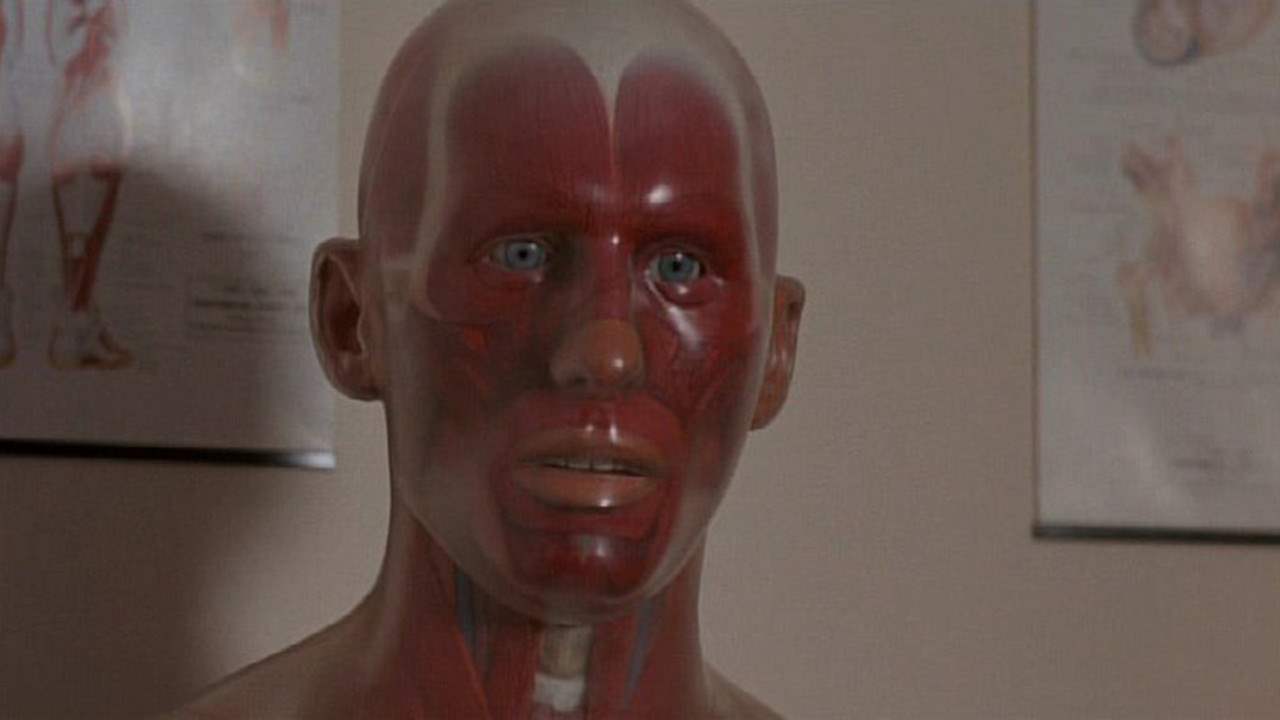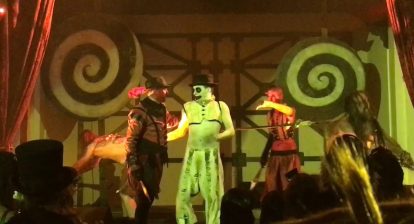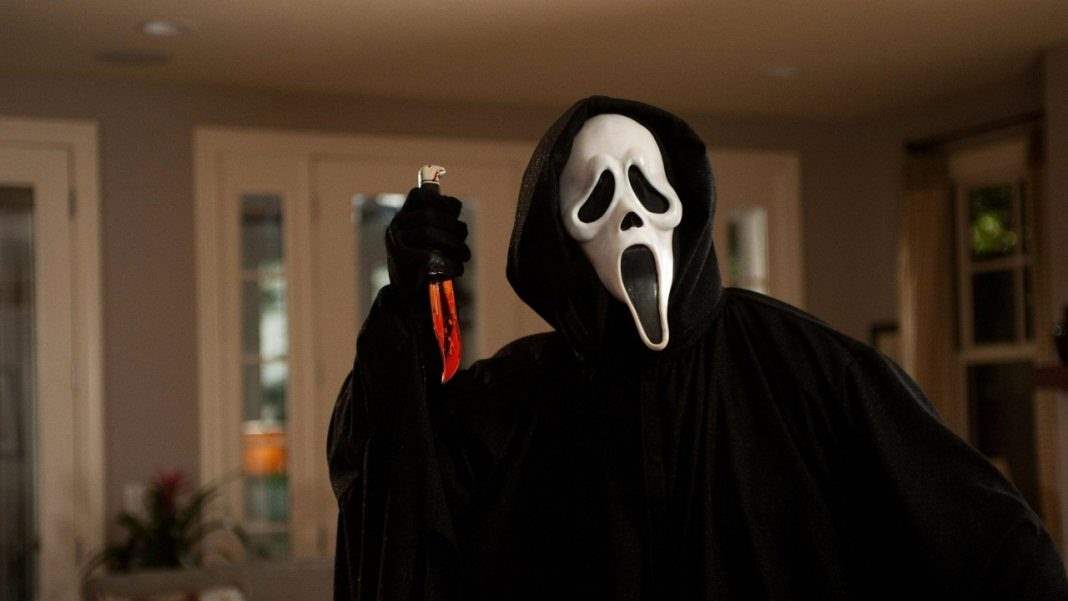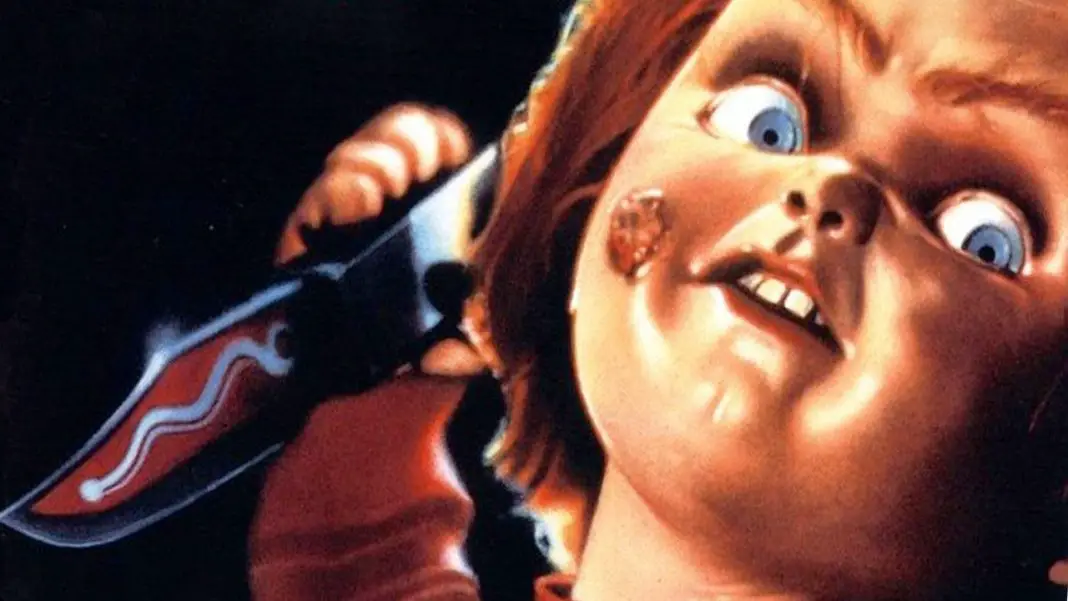Welcome to Back to the ’80s. This recurring feature aims to take a look at the good, the bad, and the ugly from horror’s most beloved decade. Regardless of which category a particular film falls under, this segment will spotlight films that horror fans can appreciate for one reason or another. We will look at how some of these flicks have stood the test of time and others have not aged quite so well. Regardless of what they look like today, these efforts from the 1980s laid the groundwork for the horror genre as we know it today.
Belonging to the malevolent doll subgenre, along with such films as The Boy, Child’s Play, and Annabelle, the lesser known Pin (also released as Pin: A Plastic Nightmare) centers around a life-sized physician’s dummy that causes its owner to believe it is alive. The movie follows two siblings (played by David Hewlett and Cynthia Preston) as they reach adulthood and focuses on the stunted growth of one sibling due to his obsessive reliance on a mannequin to cope with any personal issues. The mannequin is named Pin, which is short for Pinocchio due to his inability to lie. This is important, being that his primary purpose is to educate.
Many parents when discussing the birds and the bees with their children tend to keep the terminology as technical as possible. The only feelings to really enter the conversation are primarily centered around love and romance. Well, this is not the case for siblings Leon and Ursula. These two tykes are given a different kind of sex education. They are taught about “the need’ people have (basically, lust) by their physician father and his life-size mannequin. Pin is mainly covered with veins and arteries. However, there are a couple other distinctive features on Pin. In addition to blue eyes that are creepily lifelike, he is an anatomically correct male mannequin. Usually his manhood is covered with a towel but every now and then he becomes exposed. Most notably by a female nurse who utilizes Pin for her own case of “the need.” Leon witnesses the nurse using Pin for satiation and this is arguably the point at which his mind begins to crack.

The parents of Leon and Ursula (the father being notably played by Terry O’Quinn) are not particularly affectionate towards their children. Mrs. Linden has obsessive-compulsive disorder and discourages any potentially “dirty” kids from coming to play with her children. Thus, Leon and Ursula tend to rely more upon each other for companionship. Dr. Linden seemingly regards his kids as if they were the children of patients rather than his own. This relationship becomes uncomfortably clear in one disturbing scene when he performs an abortion on his own daughter. He even asks if Leon would like to watch for educational purposes. Each child seeks to gain independence in their own way. What leads up to the abortion is Ursula’s desire for male attention caused by “the need.” This causes Leon to become more introverted and he turns to Pin for companionship.
The way that Dr. Linden succeeds with Pin is through ventriloquism. While in their formative years, Leon and Ursula develop a close relationship with similar curiosities. The major difference between them is illustrated in a scene where Leon believes wholeheartedly in Pin’s “ability” to talk while Ursula tries (unsuccessfully) to catch her father’s lips moving. This sets up the rest of the film where Leon’s sanity slips away further while Ursula attempts to stay grounded in reality.
Eventually, a car accident involving Pin brings about the death of the children’s parents. Leon has developed a relationship with Pin and maintains conversations for the both of them. Sandor Stern directs the feature in such a way that the audience is aware that Leon is speaking for the oversized doll, yet at times can almost believe that Pin is in some way alive. There is a dangerous influence that he has over the young man. The idea is raised as to whether Leon developed into someone with questionable morals on his own or if Pin is somehow responsible. Leon’s entire world is held together through his relationship with the mannequin and he ultimately becomes a way for Leon to speak his own truth. However, Leon is willing to do anything to make sure that no one will come between him and his inanimate object. The only complication is his relationship with Ursula.
 Similar to the way Leon relies upon Pin, Ursula relies on Leon. He is her primary confidante. She respects and depends upon him for support. However, Ursula consistently seeks to maintain a sense of independence by branching out into the world. This independence grows increasingly strong as she watches her brother’s descent into madness. The only way Leon can compromise with Ursula is by forcing her to interact with Pin in ways that make the figure seem alive. Leon reluctantly loosens his hold on her through his approval of her getting a job. But once Ursula begins to date Stan (John Pyper-Ferguson), the entire foundation begins to crack for Leon. Throughout the film, Leon has teamed up with Pin in order to scare away anybody that might disrupt his fantasy of a perfect life with the only two “individuals” that he can tolerate: Pin and Ursula. Stan demonstrates the first real obstacle to potentially smash that fantasy. Leon will do whatever it takes to make sure that does not happen. Ironically, it is Pin’s inability to lie that could be Leon’s undoing.
Similar to the way Leon relies upon Pin, Ursula relies on Leon. He is her primary confidante. She respects and depends upon him for support. However, Ursula consistently seeks to maintain a sense of independence by branching out into the world. This independence grows increasingly strong as she watches her brother’s descent into madness. The only way Leon can compromise with Ursula is by forcing her to interact with Pin in ways that make the figure seem alive. Leon reluctantly loosens his hold on her through his approval of her getting a job. But once Ursula begins to date Stan (John Pyper-Ferguson), the entire foundation begins to crack for Leon. Throughout the film, Leon has teamed up with Pin in order to scare away anybody that might disrupt his fantasy of a perfect life with the only two “individuals” that he can tolerate: Pin and Ursula. Stan demonstrates the first real obstacle to potentially smash that fantasy. Leon will do whatever it takes to make sure that does not happen. Ironically, it is Pin’s inability to lie that could be Leon’s undoing.
This is a film that definitely taps into the psychological aspect of the horror genre, Pin succeeds on many levels. There are loads of creepy moments that are bound to shock the viewer. Stern’s direction is more than adequate in breathing life into the believability of a potentially evil mannequin. While perhaps necessary in order to compete with the contemporary slasher films of the time, there is one chase scene that is somewhat out of place. Done in a way that puts the viewer into the POV of Pin, the scene is a standard duplication of any Halloween or Friday the 13th chase sequence. The film is otherwise strong.
Hewlett’s presentation of Leon is well done in perpetuating a calculating and cunning individual full of condescension. He demonstrates one forced to balance high intelligence and oncoming insanity. Preston as Ursula shines as she sheds her vulnerability in order to take complete control of her own life. Horror fans looking to find a more cerebral scary movie from the 1980s will respond well to Pin. This feature will also prove a welcome addition to those that enjoy killer doll flicks. Joining the ranks of Chucky or Annabelle, Pin is a dummy that fits right in with the gang.







